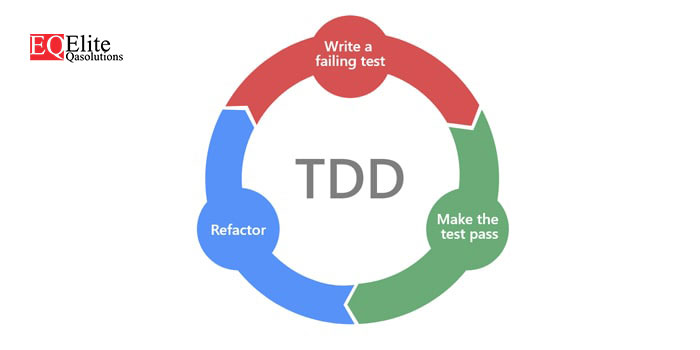What is TDD (Test-driven development) and its Steps?

TDD has become the most popular over the past few decades. Test-driven development also famous and referred as test-driven design, is a method of implementing software programming that intertwines unit testing, programming & refactoring on the source code. TDD (Test Driven Development) uses a different approach to that used in traditional software development.
Advantages of TDD (Test Driven Development)
Simplification
Writing tests first permits software engineers to mainly consider what they want from the code as well as the functions that it will offer. It also forces expert engineers to only the right code in response to the necessities of the tests they have scripted.
Extensible & Maintainability
Old styles of development were faced with the number of challenges around maintainability as well as extensibility. Because TDD is ingrained into the development procedure at such a granular level, it is guaranteed that every single standalone code can be modified without risking side effects to other pieces of the software.
Improved code quality with Refactoring
Refactoring is a central procedure with TDD. It guarantees that developers are always strengthening their codebase which will make sure that the software is modular and updated.
Steps of Test-driven development (TDD)
TDD has the following different steps:
1. Think and write test cases
In the first step, Developer writes the test case without any piece of code in front of him. This is mundane and time-consuming, but make sure that the developer understands the functionality essential and in accordance with that write the test case. The test case is not biased to showpiece of code works rather test cases are to test the expected functions.
2. Red – Run all tests and check failure of test case
The preceding step that follows is to ensure the correct working and that the new test doesn’t pass by any sort of mistake without any new code. This step also eliminates the possibility that the new test always passes.
3. Green – Writing Code
In the next step writing code is done that clears the test. The new code isn’t perfect but is later changed as per the necessities. It’s merely designed to test and doesn’t enclose other functionalities.
4. Green -Run Automated Tests:
If every single test case produced simply passes the test, it implies that the code meets all needed specifications. Hence the next step of the cycle can be Refactor the code to remove duplication and to clean it.
5. Refactor your Code:
This is exactly the same as removing duplication. A refactoring doesn’t damage any existing functionality and assists to remove duplication between production and test codes. The code is now cleaned as needed.
6. Repeat this Cycle:
The cycle is repeatable as in the past cases with a new test. The critical requirement is that the size of the steps should be simple and not extended, with around 1 to 10 edits between each test run. If fresh code does not satisfy a new test, the programmer should perform extra debugging. Repeatable integration offers revertible checkpoints.
Implementing Test-driven development can be challenging though because there is always the demand of the right people who have the required skillsets for using distinct unit test frameworks. If you have expert people, then it is always far better to implement Test-driven development in your projects.
ImpactQA’s provides automation testing services that are designed to cover key business scenarios for your company’s software. We ensure your development process is uninterrupted by changes that can negatively impact the functionality and solution architecture. Our team addresses such changes as rapidly as possible by promptly modifying the testing routine.



